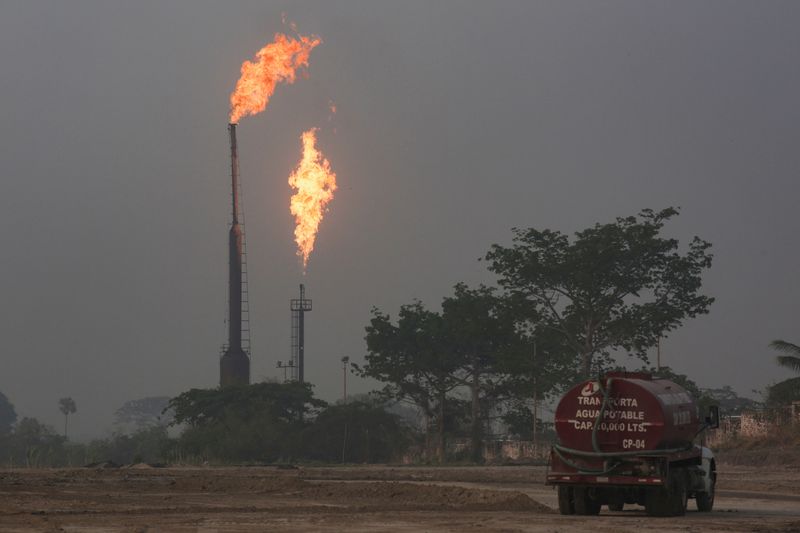By Stefanie Eschenbacher
MEXICO CITY (Reuters) - Mexico's hydrocarbon regulator is investigating state oil company Petroleos Mexicanos (Pemex) over suspected excessive natural gas flaring and other violations at another giant field, according to two sources with direct knowledge of the matter.
In 2019, Pemex, which is under international pressure to clean up its operating practices, hailed the Quesqui field in the southern state of Tabasco as the most important energy find in the region in three decades.
Experts at the Comision Nacional de Hidrocarburos, as the regulator is known, went on a surprise visit there on Tuesday, the sources told Reuters, speaking on condition of anonymity because they were not authorized to speak publicly.
Concerns centered on "excessive gas flaring" and other possible violations of Pemex's development plan, they said.
Neither the energy ministry nor Pemex responded to requests for comment. The CNH declined to comment.
Reuters reported last month the regulator had decided to fine Pemex for violating the development plan in a similar field in neighboring Veracruz state. Those violations at the Ixachi field also resulted in excessive gas flaring.
It was unclear what consequences the probe into the Quesqui field could have for Pemex.
However, the sources said any findings of wrongdoing, especially to do with gas flaring, would be a blow to the government as international pressure - including from Pemex bondholders - is mounting to curb the practice that releases greenhouse gases.
Mexican President Andres Manuel Lopez Obrador in 2019 called Quesqui a field with "a lot of potential" that would help achieve his promise of reviving Pemex.
He also promised to tackle high - and rising - rates of gas flaring, calling it "the most irrational thing that can happen: to be buying gas and having to burn it here, with the contamination that it implies."
Buried in the seams of carbonate rock along with other hydrocarbons, gas is often flared when it comes to the surface as a byproduct of oil exploration and production if there is no infrastructure to capture, process and transport it.
But just like the Ixachi field, the gas in Quesqui is not a byproduct: it is a key resource, along with higher-value condensate.

Quesqui has so-called 3P reserves, made up of deposits considered proven, probable and possible, equivalent to 500 million barrels of crude oil.
Mexico last year burned off record levels of gas at an increasing number of locations, scientists found.